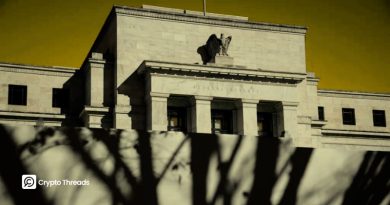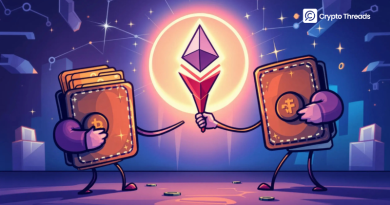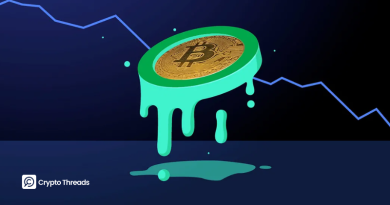Tether Gold (XAUt) Surges as Central Banks and ETFs Buy In
Meta Description
As gold prices hit record highs amid economic uncertainty, Tether Gold (XAUt) continues its growth trajectory, reflecting institutional and central bank demand for the precious metal.
Key Takeaways
- Tether Gold backed by 7.66 tons of pure gold with market capitalization exceeding $800 million
- XAUt price surged 40% over the past 12 months, closely tracking physical gold performance
- Global central banks accumulated over 1,000 tons of gold in 2024
- Gold ETFs recorded $38 billion in inflows during the first half of 2025
A volatile macroeconomic landscape has sparked a new gold rush among institutional investors and central banks, with gold bullion hitting record highs this year — a trend that has also extended to Tether’s gold-backed digital token.
By the end of the second quarter, Tether Gold (XAUt) — a tokenized commodity offering direct exposure to physical bullion — was backed by 7.66 tons of fine gold (measured in troy ounces), according to the company’s latest attestation report verified by BDO Italia.
This reserve supports over 259,000 XAUt tokens in circulation, giving the asset a total market capitalization of more than $800 million.
The price of Tether Gold closely tracks the market value of physical gold, which is currently trading just below $3,400 per troy ounce. XAUt effectively brings gold onto the blockchain, combining the timeless appeal of the yellow metal with the portability, divisibility, and redeemability commonly associated with Bitcoin.
Over the past 12 months, XAUt’s price has surged by 40%, mirroring the performance of spot gold, according to Bloomberg data.
Tether Gold, which launched in January 2020, is available for trading on several major crypto exchanges, including Bybit, Bitfinex, BingX, and KuCoin. The token recently expanded into Thailand through the Maxbit cryptocurrency exchange.
Tether’s liquidity network, USDT0, recently introduced an omnichain-compatible version of XAUt on The Open Network (TON).
Gold demand gains momentum amid macroeconomic and geopolitical turbulence
While crypto investors have long touted Bitcoin as “digital gold”, offering similar qualities to bullion with greater portability and digital-native features, physical gold remains the ultimate safe-haven asset during times of uncertainty.
According to the World Gold Council (WGC), global central banks accumulated over 1,000 metric tons of bullion in 2024 — marking the third consecutive year that milestone has been surpassed. The Council also noted that a vast majority of central bankers expect bullion reserves to continue rising over the next 12 months.
Christopher Gannatti, Global Head of Research at WisdomTree, commented on the unprecedented pace of gold accumulation by monetary authorities: “This is not normal. For decades, central banks were net sellers of gold. Now they’re stockpiling it again.”
“In a world of rising geopolitical risk and currency weaponization, gold is one of the few assets that travels well across borders and regimes,” Gannatti added.
Institutional investors have followed suit, pouring billions into gold exchange-traded funds (ETFs) in the second half of 2024.
This momentum has carried into 2025, with the first half of the year witnessing the largest gold ETF inflows in five years, according to WGC data. Gold ETFs recorded $38 billion in inflows during the first six months, increasing collective holdings by 397.1 metric tons of physical bullion.
The surge in demand has been driven by escalating geopolitical and economic concerns, including US President Donald Trump’s trade war, which has amplified fears of economic instability and a potential recession.
Economist Peter Schiff has also highlighted persistent inflation risks as a key driver of gold’s appeal. Inflationary pressures have resurfaced in the United States, with the Federal Reserve expecting price increases to accelerate in the second half of the year as tariffs push costs higher for producers and consumers.
This outlook has prompted a cautious stance on monetary policy. Preston Caldwell, Morningstar’s senior US economist, noted that he has “delayed expectations of rate cuts” in light of these inflationary trends.



